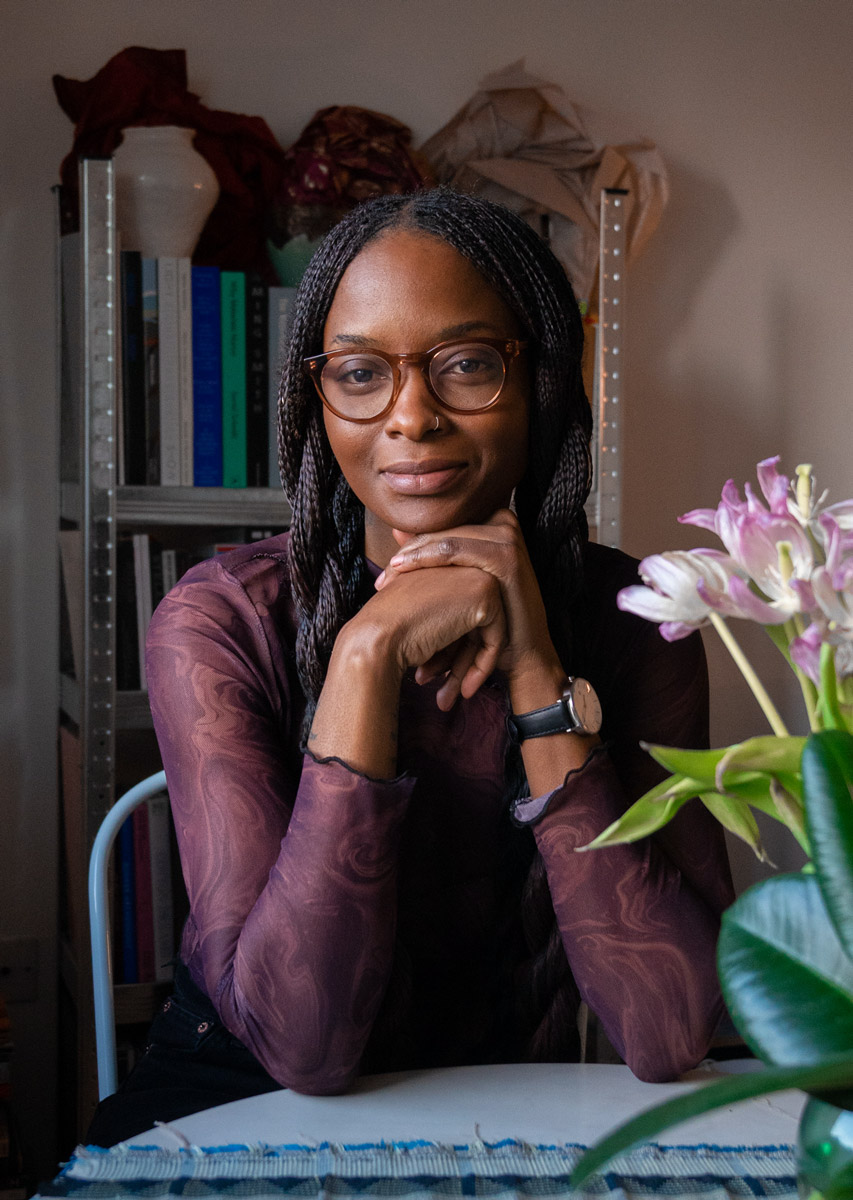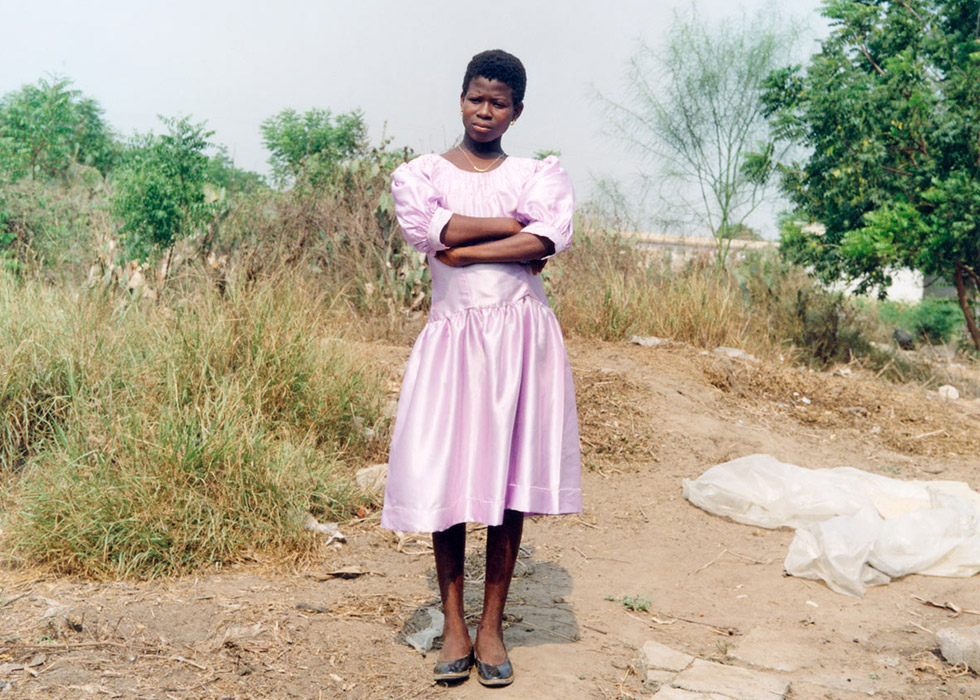Autograph’s current exhibition, A Thousand Small Stories, presents a retrospective of work by the portrait photographer Eileen Perrier. Spanning three decades, the exhibition reflects on cultural identity and notions of belonging, to acknowledge the profound value of being seen.
Here, writer Dr. Jareh Das reflects on the significance of Perrier’s practice and the ways in which it resists colonial legacies of photography, instead engaging with the medium as a social practice with the capacity to honour everyday individuals and offer space for care and recognition.
A Thousand Small Stories is on display and free to visit at Autograph until 13 September 2025.
A Thousand Small Stories gathers an expansive archive of portraiture that reshapes how we see, belong and bear witness. Rooted in the lived experience of familial memory and African and Caribbean diasporic identity, Eileen Perrier’s photographs centre and honour Black presences found in the ordinary and everyday. Through her lens, portraiture is not static but social, not extraction, but exchange.
Across her various projects, Perrier reclaims and reimagines the formal studio setting through mobile and improvised environments, including homes, salons and public squares, dissolving hierarchies and establishing a portrait practice rooted in presence, care, and mutual recognition. In her early series Red, Gold and Green (1997) Perrier explores diasporic identity through intimate scenes set in domestic London interiors. The series was developed while Perrier was still studying at the Surrey Institute of Art and Design, following a formative trip to Ghana, after which Autograph commissioned twenty further portraits for the series.
Between 1996 and 1997, she photographed three generations of British Ghanaians and their extended relatives, including those of Jamaican, Irish, English and mixed heritage backgrounds, in the front rooms of their homes. Inspired by the Ghanaian flag, she created a makeshift studio using vivid red, gold and green fabrics as backdrops, allowing glimpses of interiors, family photographs and keepsakes to enter the frame. The series celebrates improvisation and the rich tradition of African studio portraiture; a lineage which features both amateur and professional photographers such as Seydou Keïta, Mountaga Dembélé, J.D. 'Okhai Ojeikere and Samuel Fosso.
This work challenges the dominance of fixed photographic traditions, opening the frame to new encounters. “It was just interesting how the sitters transformed themselves,” Perrier reflects, “they’d be in their house clothes, and then, when they saw the lights, background and the camera, they went into their bedrooms, changed, and put on their fancy clothes that they would wear for church or special events.” These relational studios, often created in domestic or shared community spaces, disrupt the power dynamics between the photographer and the subject. Here, the act of being photographed is not passive, but co-authored by what might be described as her sitters entering into an agreement to be seen on their own terms.
This echoes Tina Campt’s notion of “listening to images”, through which the American scholar encourages us to cultivate a practice of attending to the quieter frequencies in vernacular and diasporic photographs. As Campt writes, “It’s about listening to the affective frequencies of the image: not just what we see, but what we feel, and what we know through other senses.”¹ Perrier’s portraits pulse with this kind of frequency. They ask us not just to look, but to stay with what surfaces emotionally and historically.
In Grace (2000), Perrier photographs individuals with a diastema, a gap between the teeth celebrated in many African cultures but stigmatised within Western beauty standards. “That series in particular was me kind of celebrating difference,” the artist explains. “Using the gap as a way of talking about how we’re impacted by the ideal of beauty.” These quiet gestures of inclusion resist the homogenising gaze of conventional portraiture, offering instead a tender reframing of beauty, dignity and visibility.
This focus on care and representation continues in Blessing (2002), which features a portrait of Perrier’s hairdresser, Pinky, set in an all-pink interior. The space is extraordinary, the colour transforming its ordinariness. Pink television, pink furniture, pink walls, a world shaped entirely by the sitter. “Because she was my hairdresser, that was my in,” Perrier recalls. “It wasn’t like I just documented a stranger.” The intimacy of the space speaks to shared rituals of self-styling, of transformation, and of beauty as self-possession. These moments of domesticity and mutual trust ground Perrier’s practice in something closer to kinship than mere representation.
Peckham Square Studio (2014) extends these gestures into the public sphere, where Perrier invited passersby for free portraits in a temporary tent studio. Commissioned by Peckham Platform, the artist invited passing sitters to pose and in exchange each received a print of their image. Many returned to view their portraits as part of Perrier's exhibition. “There’d be a little advert, or like a flyer, saying ‘free portraits’. That’s what kind of drew people in… They’d be made aware that the image would be shown in a gallery,” she explains. These portraits, freely offered, act as sites of mutual recognition, rooted in everyday community interaction.
In this way, Perrier’s practice resonates with the legacy of South London photographer Harry Jacobs, who ran a portrait parlour in Brixton from the 1950s to the 1990s.² Like Jacobs, Perrier offers her sitters a place to be seen on their own terms. Jacobs’ portraits became family heirlooms, documents of migration and belonging, made at a time when few Black families owned cameras. Perrier’s work continues this tradition, while also gently disrupting it, placing the relational at the centre of the frame, rather than merely representing it.
Her early project, Ghana (1995-96), demonstrates how personal biography and political aesthetics coalesce. For this series, shot during her first visit to Ghana, Perrier makes deliberate use of colour, chosen over the stark black-and-white aesthetic of charity photography and colonial ethnography to assert a politics of life, vibrancy, and refusal. These gestures align with what Professor Mark Sealy has described as a “House of Other”, a cultural space that resists photography’s colonial lineage and centres alternative knowledge systems. “In this House,” he writes, “difference is exalted… Monuments are rethought, and unsung heroes are named and clothed with dignity."³ Perrier’s work belongs to this House. It does not seek to monumentalise, but to dignify. To stay close to lived life and its many textures.
Throughout, her photographs remain attentive to the emotional and temporal complexity of image-making. “There are these two things that exist, somebody dressing up for an image and the final image,” she notes. “The final image is never just this fixed thing… There are so many things that have led to the construction of the image as the viewer sees it.” Photography, in Perrier’s hands, is a way of holding these layers – a space of encounter, reflection and return. This retrospective reveals not only the depth of Perrier’s engagement with photography as a social practice, but also her commitment to building an image archive that honours presence. Her portraits do not simplify or reduce in complexity. They make space for difference, for memory, for care. And they ask us, in turn, to look again with intention, care and with love.
_______
¹ Tina Campt, Listening to Images (Durham, NC: Duke University Press, 2017), p.8.
² For an overview of Harry Jacobs, see Lambeth Council, “Harry Jacobs: Portrait Parlour,” Windrush 2021: I Am Here.
³ Mark Sealy, “Fixing Up the House / The Passion of Photography,” March 2023 for the exhibition, Trace - Formations of Likeness. Photography and Video from The Walther Collection, Haus der Kunst München. Curated by Anna Schneider with Hanns Lennart Wiesner. Developed in close collaboration with The Walther Collection, and curatorially advised by Renée Mussai.

Dr. Jareh Das is an independent curator working between the UK and West Africa. Her work explores the intersections of modern and contemporary art, as well as performance. Das holds a PhD in Curating Art and Science: New Methods and Sites of Production from Royal Holloway, University of London, where her research explored live art practices within the context of visual arts.
Her curatorial and writing practices privilege embodied knowledge and move fluidly across exhibitions, performance, and critical texts. Between 2020 and 2024, she developed and led curatorial research projects with institutions across Europe and West Africa, including Camden Art Centre, Deptford X Festival, and Galerie Atiss Dakar. Her writing spans exhibition catalogues, academic journals, magazines, and artist monographs, engaging closely with the practices of living and overlooked artists, as well as experimental forms of criticism. Das is currently working on her first book on Black women ceramicists and artists who work with clay. Find out more on her website.

17 Apr - 13 Sep 2025
A free exhibition contemplating class, cultural identity and belonging through the photographic portrait
Banner image: Eileen Perrier, from the series Red, Gold and Green [detail], 1997. Commissioned by Autograph, London. © and courtesy the artist.
Images on page all © and courtesy the artist: 1-3) Eileen Perrier, from the series Red, Gold and Green, 1997. Commissioned by Autograph, London. 4-5) Eileen Perrier, from the series Grace, 2000. 6-7) Eileen Perrier, from the series Blessing, 2002. Commissioned by The Photographers’ Gallery. 8-9) Eileen Perrier, from the series Peckham Square Studio, 2014. Commissioned by Peckham Platform. 10-11) Eileen Perrier, from the series Ghana, 1995-1996.
About the author: Jareh Das © Nelta Kasparian.
Exhibition: Eileen Perrier, from the series Ghana [detail], 1995-96. © and courtesy the artist.
Autograph is a space to see things differently. Since 1988, we have championed photography that explores issues of race, identity, representation, human rights and social justice, sharing how photographs reflect lived experiences and shape our understanding of ourselves and others.